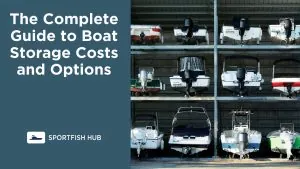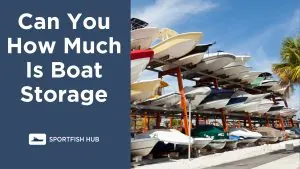The beam of a boat refers to the width of the boat at its widest point. The beam impacts many aspects of a boat’s performance and functionality.
You might also want to read: What is the front of a boat called?
Defining Beam
As stated above, the beam is the width of a boat’s hull at its widest point. This maximum width is usually found amidships, or near the center of the boat’s length. However, some boat designs may have multiple sections of maximum beam width.
The measurement is taken from the port side to the starboard side, not including any projections or extra structures outside of the boat’s main hull. This means that rub rails, toe rails, and other deck extensions are not counted in the beam measurement.
How Beam Impacts Performance
The beam measurement has several impacts on a boat’s characteristics and performance:
- Stability – A wider beam generally equates to greater stability in the water. The broader shape provides more resistance against heeling and capsizing from wind and waves.
- Capacity – Wider hulls can accommodate larger interiors and carry more weight safely. This increased capacity applies to factors like passenger capacity, cargo space, engine size, etc.
- Draft – A wider hull leads to shallower draft, or less depth below the waterline. This allows the boat to navigate areas with limited depths.
- Speed – Narrow hulls are generally faster, while wider hulls are slower. The slimmer shape causes less drag in the water.
- Handling – Wider beams mean more surface area contacting the water. This leads to increased traction and maneuverability at slower speeds.
So in summary, a greater beam lends itself to greater stability, capacity and shallow water handling. But it compromises speed potential due to increased drag.
Beam and Balance
Another vital factor is how the beam measurement interacts with the boat’s length and weight distribution. The proportions between beam, length and weight must be balanced properly.
If the beam is too wide for the boat’s length, handling will suffer. The boat may feel excessively sluggish and unresponsive. If the beam is too narrow for the boat’s weight, it may make the craft unstable and tippy.
Naval architects carefully optimize these measurements for each boat’s intended purpose. The ideal balance provides optimal stability, capacity, speed and maneuverability.
Beam Regulations
For boats over 20 meters long, international regulations determine the minimum beam allowed based on length and other factors. These regulations are intended to ensure all large ships and boats meet baseline stability and safety standards.
Certain waterways like canals and rivers also impose beam restrictions on the boats allowed to pass through. Bridges, locks and narrow sections constrain the maximum widths. Boat designers keep these limitations in mind for vessels intended for specific routes.
Summary
So in summary, the beam has a central role influencing a boat’s performance, capacity, safety and regulatory compliance. It requires careful specification by naval architects and builders for each individual hull design.












